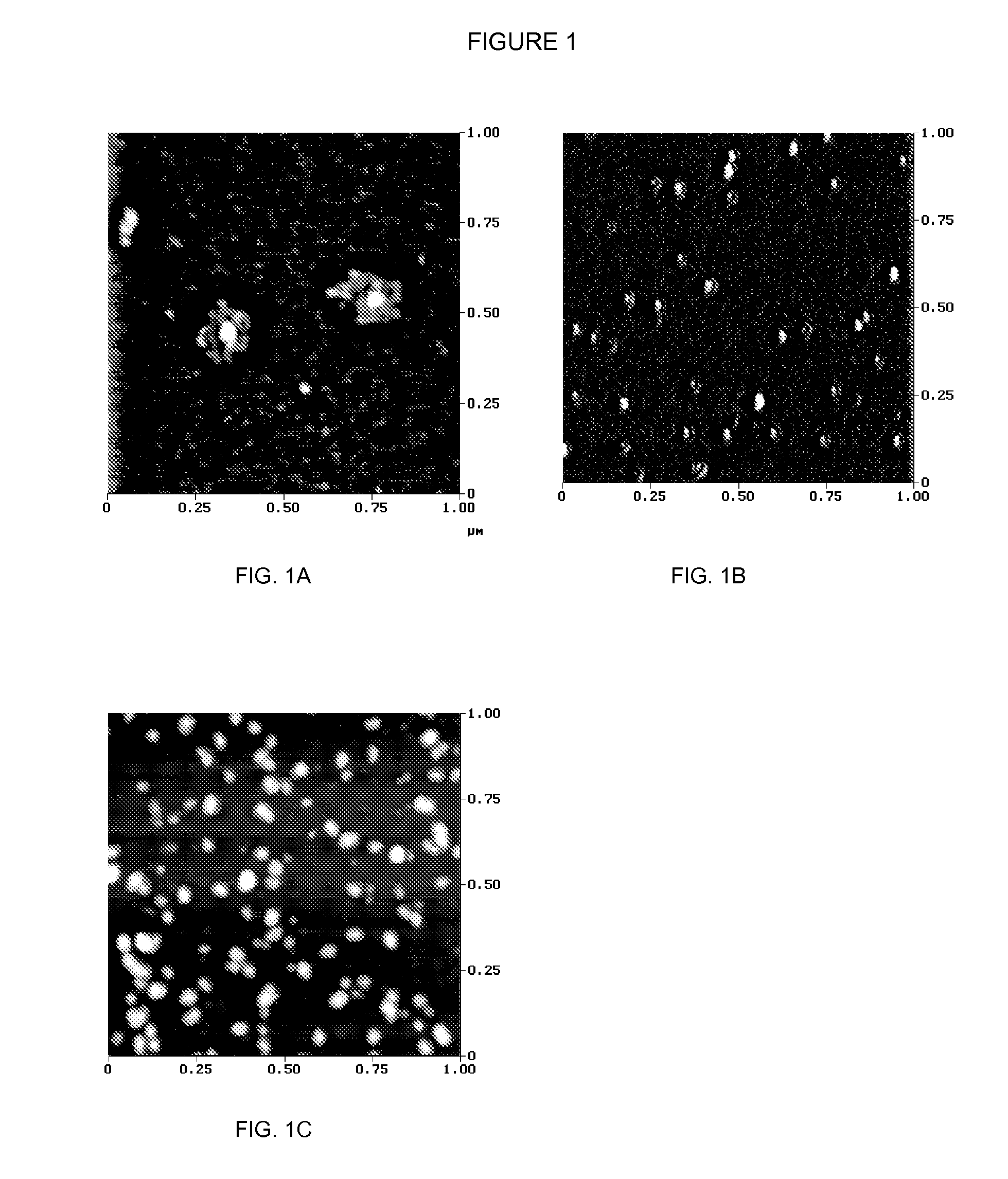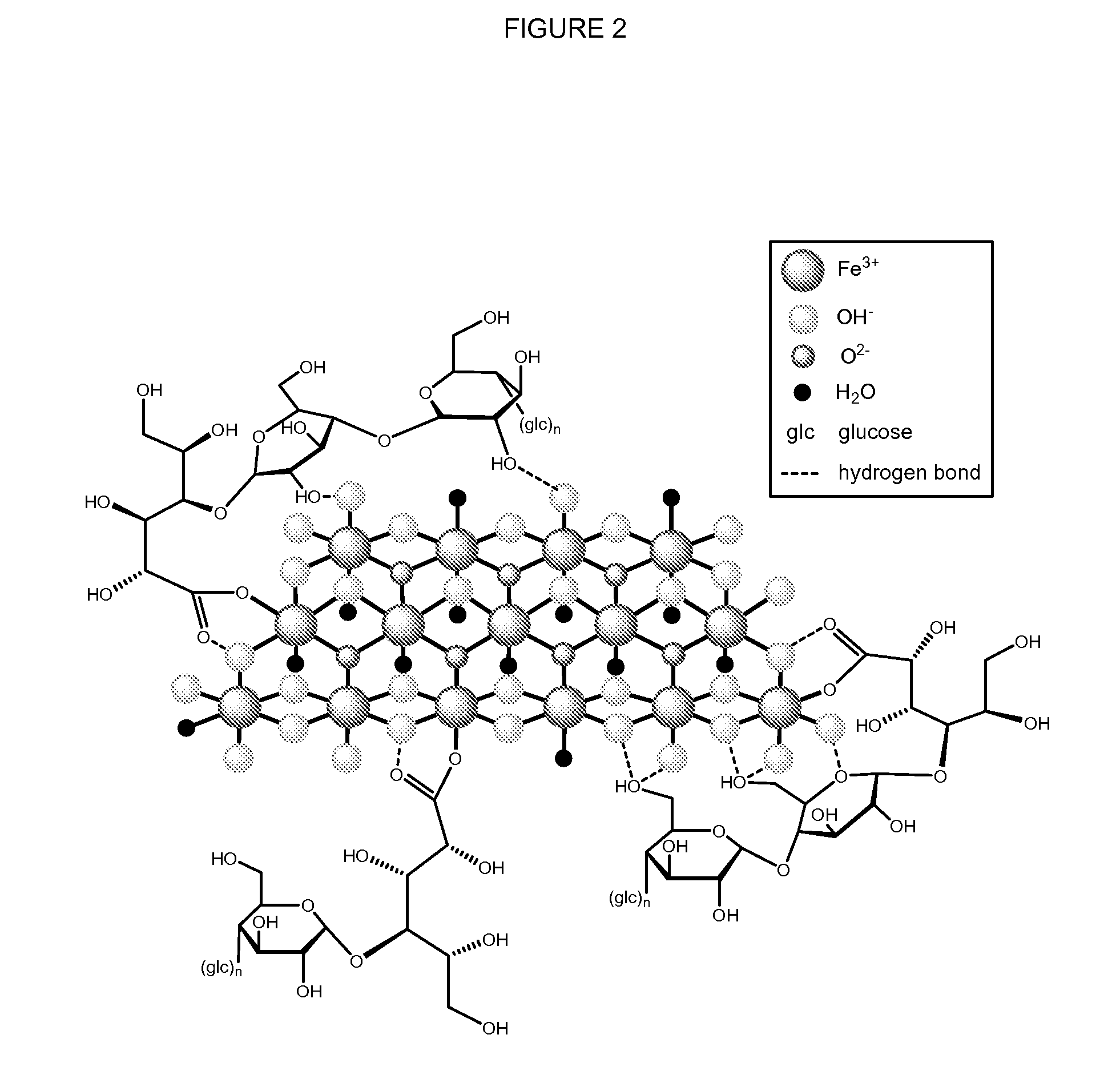Methods and compositions for administration of iron
a technology of iron carbohydrate and treatment method, applied in the direction of drug composition, metabolic disorder, extracellular fluid disorder, etc., can solve the problems of dosage and administration rate limitations, health risks and dosage limitations associated with their use, and the incidence of anaphylactoid-type reactions, etc., to achieve safe and efficient
- Summary
- Abstract
- Description
- Claims
- Application Information
AI Technical Summary
Benefits of technology
Problems solved by technology
Method used
Image
Examples
example 1
Non-Toxicity Studies
[0103] Nonclinical toxicity of VIT-45 is very low, as is normal for Type I polynuclear iron (III)-hydroxide carbohydrate complexes. The single dose toxicity is so low that the LD50 could not be estimated and is higher than 2000 mg iron / kg b.w. Mice tested with a single dose of 250 mg iron / kg b.w., injected within 2 seconds, showed no signs of illness. The highest non-lethal dose level of 1000 mg iron / kg b.w. in mice and rats is also very high in comparison to a single unit dose of, for example, 15 mg iron / kg b.w. once per week in humans. These results provide factors of about 70-fold a human dose, demonstrating a large safety margin for acute toxicity of the product.
example 2
Pharmokinetic Studies
[0104] Pharmacokinetic and red blood cell measurements of 52Fe / 59Fe labelled VIT-45 following i.v. administration using PET in 6 patients showed a red blood cell utilization from 61 to 99%. The 3 patients with iron deficiency anemia showed a utilization of radiolabelled iron of 91 to 99% after 24 days, compared to 61 to 84% for 3 patients with renal anaemia. The terminal t1 / 2 for VIT-45 was calculated to be approximately 16 hours, compared to about 6 hours for iron sucrose. In two further studies in patients with iron deficiency anemia, pharmacokinetic analyses revealed increases in exposure roughly proportional with VIT-45 dose (Cmax approximately 150 μg / mL and 320 μg / mL following 500 mg and 1000 mg doses, respectively). VIT-45 demonstrated a monoexponential elimination pattern with a t1 / 2 in the range 7 to 18 hours. There was negligible renal elimination.
example 3
Efficacy Studies
[0105] The main pharmacodynamic effects of VIT-45 were transient elevations of serum iron levels, TfS and serum ferritin. These effects were seen in all studies (where measured), following both single doses and repeated doses. The increase in serum ferritin levels illustrated the replenishment of the depleted iron stores, which is a well-identified and desired effect of iron therapy. In addition, transiently elevated TfS indicated that iron binding capacity was almost fully utilized following VIT-45 infusion.
[0106] Efficacy of iron replacement therapy is interpreted mainly in terms of the ability to normalise Hb levels and iron stores. In the multiple dose studies, patients demonstrated a slowly-developing, sustained increase in Hb levels during study participation. In one study, 37% and 48% of patients in Cohorts 1 and 2, respectively, had achieved normal Hb levels at the 4-week follow-up visit, and 75% and 73%, respectively, had achieved a ≧20 g / L increase in Hb ...
PUM
| Property | Measurement | Unit |
|---|---|---|
| Fraction | aaaaa | aaaaa |
| Fraction | aaaaa | aaaaa |
| Fraction | aaaaa | aaaaa |
Abstract
Description
Claims
Application Information
 Login to View More
Login to View More - R&D
- Intellectual Property
- Life Sciences
- Materials
- Tech Scout
- Unparalleled Data Quality
- Higher Quality Content
- 60% Fewer Hallucinations
Browse by: Latest US Patents, China's latest patents, Technical Efficacy Thesaurus, Application Domain, Technology Topic, Popular Technical Reports.
© 2025 PatSnap. All rights reserved.Legal|Privacy policy|Modern Slavery Act Transparency Statement|Sitemap|About US| Contact US: help@patsnap.com


